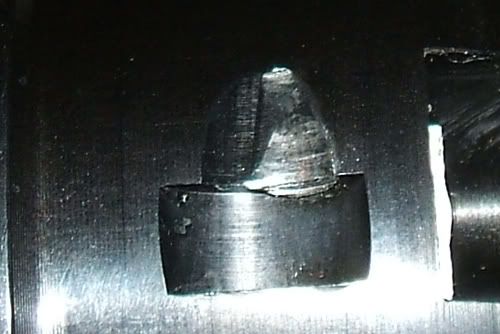Hello all, this is my first post so bear with me. Bought a Pietta 1851 Navy in September from Bass Pro Shops here in LA and have shoot it twice. Second time was this past Saturday. This is my first black powder pistol and I am hooked.
Noticed on Saturday the action was a little rough so I took down the pistol all the way when I cleaned it and low and behold found some rust on the hand and spring. All was removed and the entire internal action lubed with olive oil and bore butter. Smooth as silk now.
I am noticing however the bolt appears to be scouring my cylinder on one side of all of the cylinder bolt stops. The scouring is right on the edge of the bevelled area adjacent to the cylinder bolt stops. Looks like the damage has been done. If I take no action, will it get worse? I found a post talking about filing down the bolt slightly but really don't know how much to file off or where exactly on the bolt I should file. Any ideas/suggestions would be appreciated.
Probably a real basic newbie question but I thought I would thru it out.
Thx in advance.
MMA1991
Noticed on Saturday the action was a little rough so I took down the pistol all the way when I cleaned it and low and behold found some rust on the hand and spring. All was removed and the entire internal action lubed with olive oil and bore butter. Smooth as silk now.
I am noticing however the bolt appears to be scouring my cylinder on one side of all of the cylinder bolt stops. The scouring is right on the edge of the bevelled area adjacent to the cylinder bolt stops. Looks like the damage has been done. If I take no action, will it get worse? I found a post talking about filing down the bolt slightly but really don't know how much to file off or where exactly on the bolt I should file. Any ideas/suggestions would be appreciated.
Probably a real basic newbie question but I thought I would thru it out.
Thx in advance.
MMA1991



